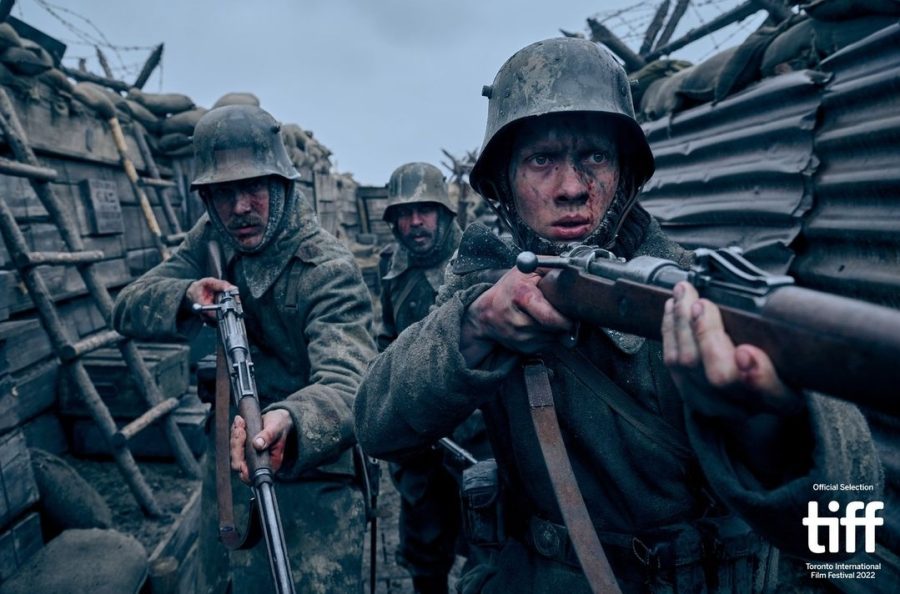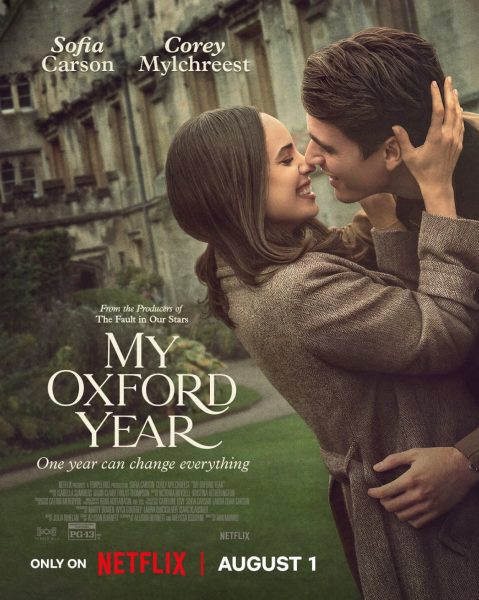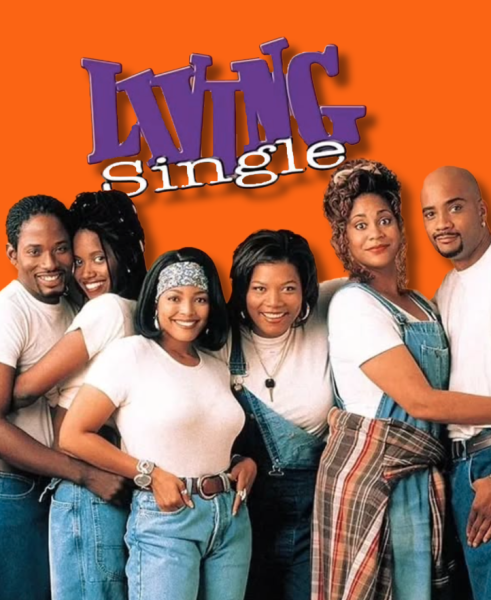The Gritty, Gruesome Realities of World War I
Berger’s film embraces the full horror of the original, 1929 anti-war novel. (Courtesy of Instagram)
While director Edward Berger’s “All Quiet on the Western Front” is not an easy film to sit through, its brilliance lies in its portrayal of World War I as horrifying and heartbreaking. Released on Netflix on Oct. 28, the German film is an adaptation of the 1929 anti-war novel by Erich Maria Remarque. The plot follows a young German soldier named Paul (Felix Kammerer) who is excited to fight in the “Great War” for the pride of his country. Once he arrives in the trenches, his youthful innocence disappears, forcing him and his friend Kat (Albrecht Schuch) to grapple with the realities of the war. Additionally, a subplot follows German official Matthias Erzberger’s (Daniel Brühl) peace talks that culminate in the signing of the armistice.
The beauty of the film lies in its cinematography, with an emphasis on grisly shots. The film opens in silence, save for the tranquil sounds of nature, and shows mountains, forests and a family of foxes before cutting to a shot of dispersing fog that reveals dozens of corpses on a blood-soaked battlefield. This opening gave only a taste of the brutality that was to come.
I had to look away during many scenes because I was uncomfortable and terrified, particularly when they showed bloody faces and severed limbs of the soldiers’ corpses. However, I appreciate the film for not shying away from the violence, because it helped me understand the sufferings of both the living and the dead. I was also angry that these soldiers had to witness such painful deaths. In this sense, the cinematography is integral in making the story’s antiwar message effective.
Complementing the brilliant cinematography are the actors’ performances. Kammerer’s portrayal of Paul’s transformation from a naive boy to a traumatized man is a highlight of the film. In one of his first scenes, Paul signs up for the war with a proud, excited smile on his face. In contrast, his most memorable scene occurs on the battlefield after a fight with an enemy French soldier. Paul’s tears fall down his mud-soaked face, his breath shakes and he whimpers in desperation as he scrambles to save the soldier from a painful death. Kammerer succeeds in his performance by encapsulating the conflicting dilemma of a soldier: Is fighting for one’s country worth the sacrifice of human compassion?
Schuch’s performance is just as excellent. Kat’s scenes with Paul are highlights of the film, and his strongest moments take place off of the battlefield and in peaceful fields and forests as his bond with Paul strengthens. In one scene, Paul reads out a letter from Kat’s wife, and when he finishes, you can tell how much Kat misses his home as he gulps and sniffles to hold back his tears. While tonally different from the scenes in the trenches, I found moments like this one just as effective because of their ability to humanize the characters outside of their identities as soldiers. By establishing this meaningful relationship, I found myself holding my breath during the battle scenes and praying that they make it out alive.
The only weak aspect of the film was the subplot surrounding the armistice. After spending so much time with the soldiers I had grown to care about, the shift to focus on government and military officials was jarring. As the film progressed, however, I understood Berger’s decision to include these scenes; it was not to necessarily learn more about the subplot’s characters, but to show the inequalities of the war. In contrast with the soldiers’ desperate efforts to find scraps of dirty food and water, the officials comfortably sit in chairs as they feast on colorful and bountiful meals. Instead of feeling sympathy for their struggle to end the war, I could only feel anger that they can struggle in luxury and comfort while soldiers like Paul and Kat live in a bloodbath. The subplot was uninteresting, but I appreciate Berger for providing another perspective beyond the battles to show how cruel and unfair the war was.
“All Quiet on the Western Front” is a raw, emotional snapshot of World War I that proves no amount of national pride is worth the sufferings of millions. It is not for the faint of heart, but if you can make it through the blood and gore, you will be nothing short of impressed.















































































































































































































